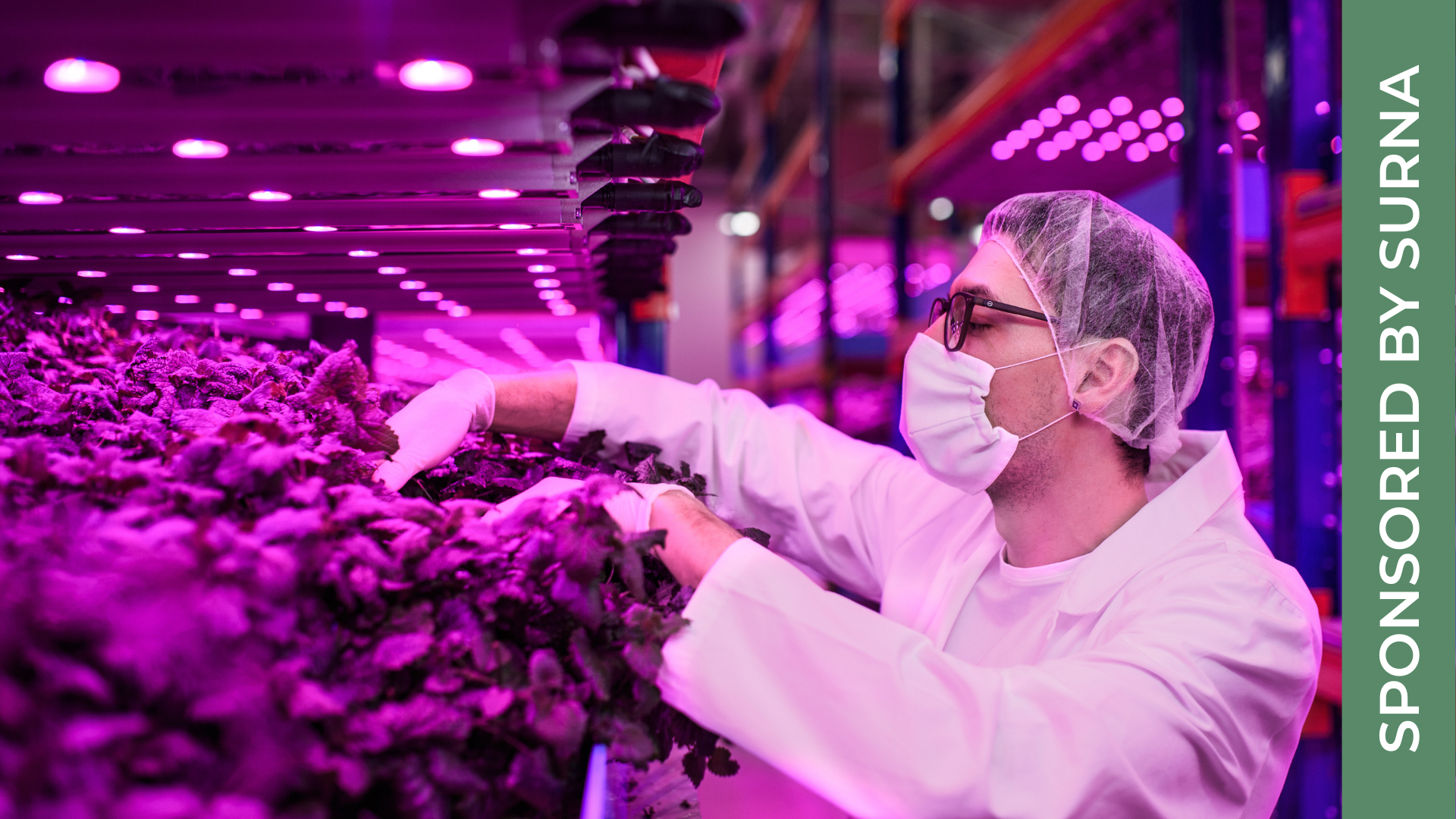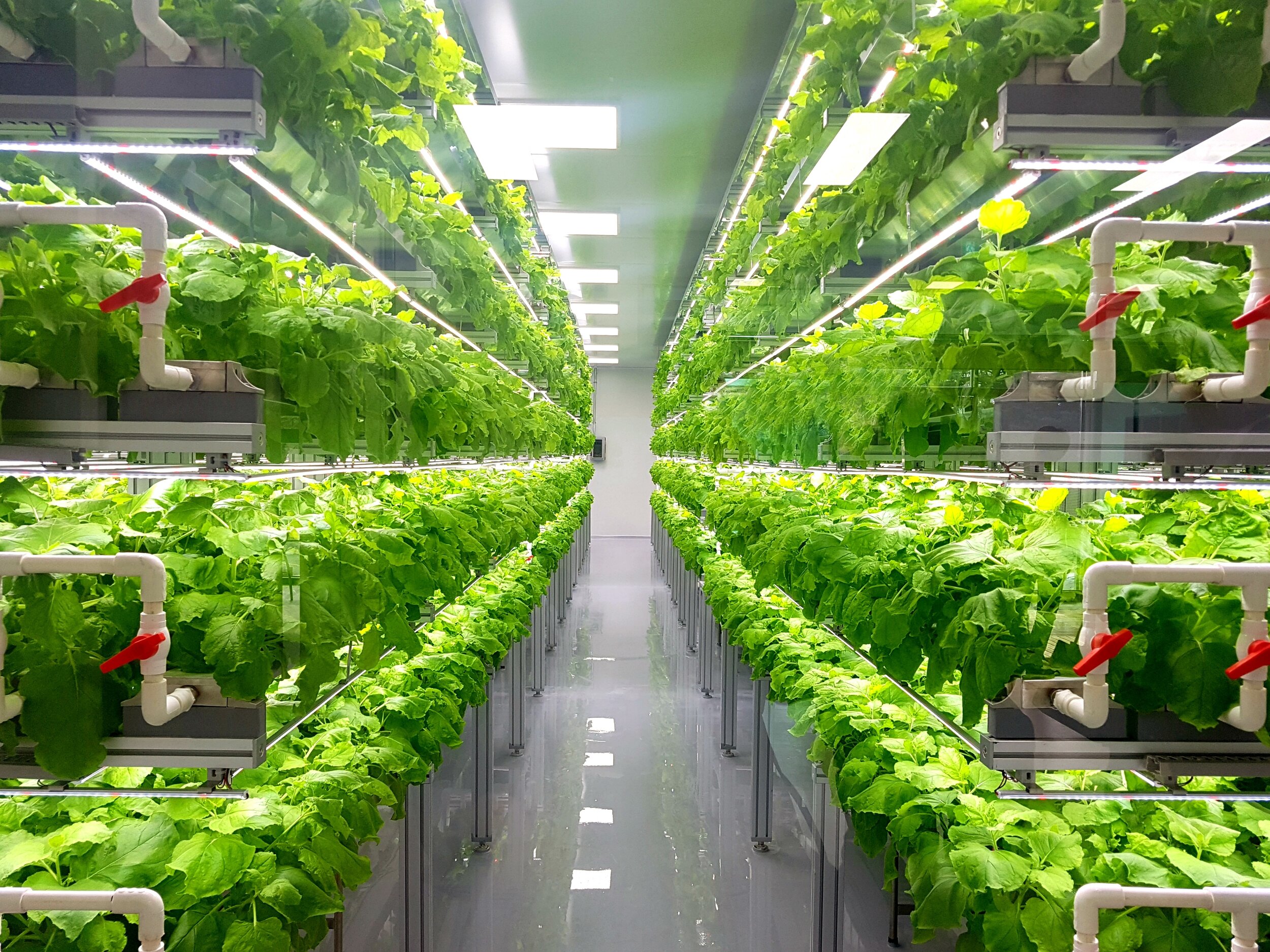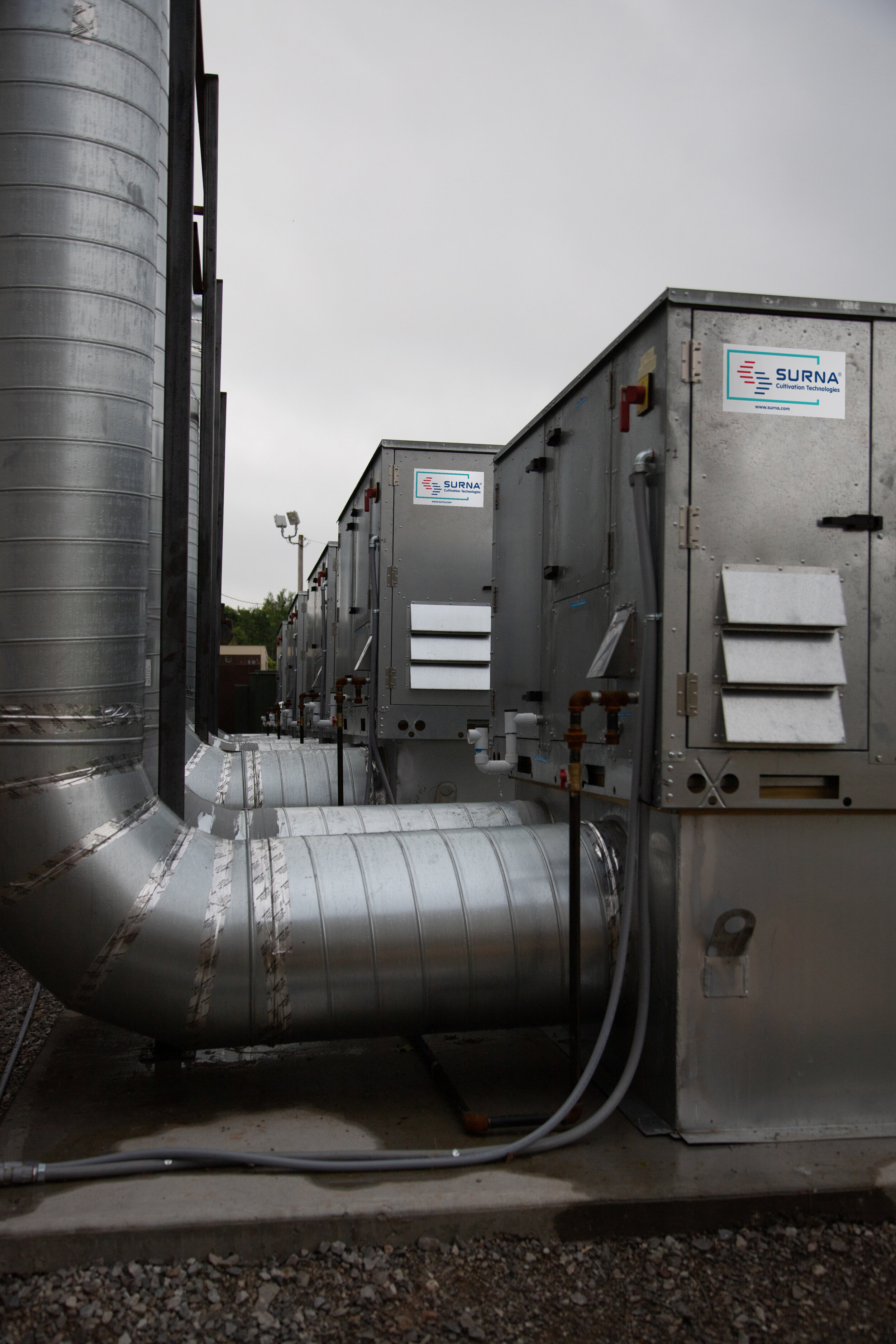Sep 20, 2021
Make It Or Break It With Your HVAC

Editor’s Note: This blog post is in partnership with Surna Cultivation Technologies.
We’re going to tell you a story about a common vertical farming entrepreneur. They live in a big city that imports 90+% of its fresh produce from thousands of miles away. They are eager to make a difference.
So, they decide to start a farm to feed their fellow urbanites with fresh and nutritious greens. They just know that the business is going to be a success. Why wouldn’t it be? They’ve got the perfect market - a health-conscious audience - and they’ve even picked out a catchy brand name and designed their own logo.
But arable land is lacking and way too expensive. With all the hype around vertical farming, they decide to go indoors to maximize space, rent in a more affordable area with lots of vacant warehouses, and avoid the arability problem entirely.
Of course, their enclosed warehouse space doesn’t provide any sunlight for the crops. So they add LED lights. This will create heat, they’re told, but no worries - the warehouse has air conditioning to combat any heat stress.
So they purchase the rest of their equipment and get up and running… only to discover that the old air conditioning in this building is not doing an adequate job of cooling the entire space, dehumidifying it from the water vapor being added through the plants’ evapotranspiration, or mitigating micro-climates from popping up across the farm.
What went wrong?

One of the things that this entrepreneur could have done better is to run the numbers to determine whether their HVAC system was capable of handling the increased temperature and humidity caused by the operations of their farm.
A proper HVAC system is crucial for regulating temperature, humidity, and air quality in your facility, ensuring that the Vapor Pressure Deficit, or VPD, is suitable for the stage and type of crop being grown. With each crop being so particular about their growing conditions, you need an HVAC system that maintains the proper environment seamlessly.
But HVAC systems for vertical farms aren’t simple to engineer.
Traditional HVACs are not always effective in controlling and balancing everything from air flow and humidity to CO2 levels.
Additionally, indoor vertical farms are supremely energy intensive. So, your HVAC needs to be as energy efficient as possible to be able to maintain air, temperature, humidity, and CO2 levels without inflating your operating expenses and haunting your business.
Modeling your HVAC energy load is a critical vertical farm planning step. The engineering and design of HVAC has to be exactly right.
“I am still surprised by how little consideration is given to the HVAC system, and its integration with the facility during early design decisions,” says Kenneth Loshelder, Surna’s Director of Engineering and Field Services. “Other than the building itself, the HVAC system is one of the most expensive components of the facility and it has a direct impact on the heart of the operation. The value of the facility is generated in the cultivation rooms yet oftentimes the racking and the climate control environment building integration are the last items to be figured out. Cultivators are better served by starting with the needs of the plant, and then working from there to determine the best way to integrate critical systems into the facility design.”
But with the numerous options out there, how do you choose the right one for your farm?
This is where Surna comes in: your one-stop-shop for HVAC strategies and controls.

With their 15+ years of mechanical engineering and HVAC equipment experience, and having served over 800 cultivators, with over 200 of them being large, commercial projects, Surna has mastered the art of designing and engineering the most efficient HVAC systems for a successful indoor grow.
According to Surna, their deep understanding of cultivation facility design and HVAC systems allows them “to help cultivators meet their goals by analyzing alternatives for their facility, engineer carefully curated cultivation technologies into holistically-designed solutions, and provide the chosen technologies that maximize their success.”
With Surna by your side, you’ll not only have one less thing to worry about, you’ll also have a whole lot more time to spend on other aspects of your vertical farm.
Past client High Desert Relief, a cultivation facility based out of Albuquerque, New Mexico, shares that “we’ve always recommended the Surna system for as long as we’ve had it because it’s just another thing we don’t have to worry about.”
So, what should you keep in mind when selecting your HVAC system? Let’s ask the experts.
Prepare yourself for the costs. Business owners often don’t realize how expensive the right HVAC system can be. Prepare for this ahead of time to save yourself the worry later.
Define your optimal growing conditions and energy performance goal in the design stage; this will help you assess the correct equipment choice for your project.
Be aware of efficient cooling opportunities, such as potential for free cooling, energy recovery systems, dedicated outdoor systems for humidity control or economizers.
Matching the heat output from your lights and the moisture production from your plants with your HVAC needs.
Have a redundancy plan in place. Your HVAC is responsible for everything from cooling and supplying fresh air to maintaining humidity levels. So, if your HVAC goes down, your farm is in big trouble.
Buy an HVAC system that works with your environment rather than against it.
Ask for help! Consult with professionals and develop a suitable HVAC system design.
While these tips will generally apply to most projects, there are numerous other factors to consider for any one individual facility.
Expanding their portfolio of services to meet more of your farm’s needs.

To further their one-stop-shop quality, Surna has now added Architecture & Engineering services to their offerings.
According to Jon Kozlowski, Vice President of Sales for Surna Cultivation Technologies, “the architectural design for a facility is the backbone of the construction project, and effective coordination with engineering teams and providers of cultivation-specific infrastructure for a facility is absolutely crucial to ensuring that the foundational design is accurate.”
Alongside custom designing the right HVAC system for your farm’s specific needs, Surna can now also assist you with your floor plans and architectural designs.
With Surna, there’s less of a need to bring in multiple stakeholders. You can grow crops knowing “that your cultivation facility has been designed and engineered by CEA experts who take your unique goals and budget into consideration.”
Surna can be your partner to manage all your HVAC needs.
As an entrepreneur, you want to spend every penny ensuring that your farm is set up for success without wasting a cent.
Let’s hear from other entrepreneurs why they chose Surna’s Controlled Climate Systems.
“Surna provided the best option for efficient cooling. The installation process was great and went smoothly. For anyone looking for a cooling system, Surna is the way to go. ”
“We don’t have swings [in temperature or humidity] that we don’t program ourselves. We’re plus or minus 2 degrees on our temperature, and we’re plus or minus 2% on our humidity. ”
“When working on construction projects, I’ve found that time spent working upfront during the design and pre-construction phases hugely alleviates the majority of issues that typically arise during the construction phase. The Surna team was of the same opinion, and together we worked through a number of project issues that saved the owner both time and money. ”

